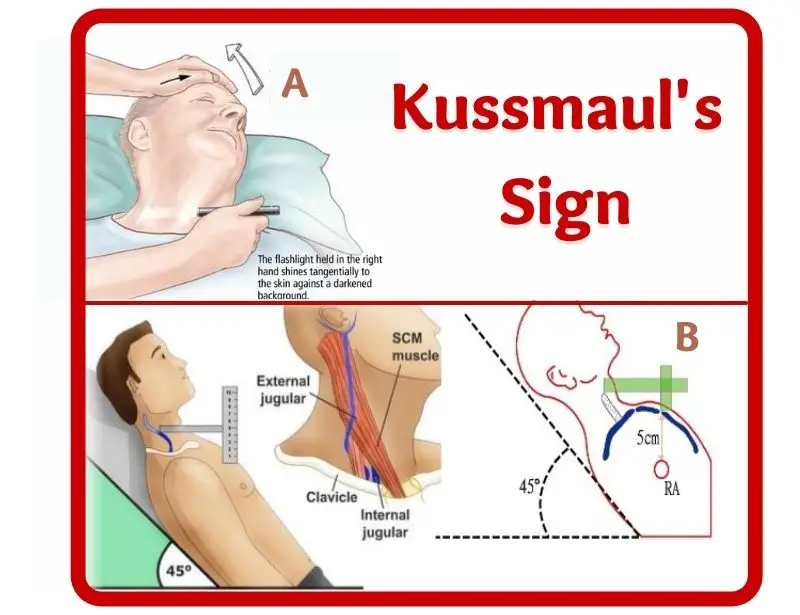Kussmaul Sign
Kussmaul’s sign is described as internal jugular vein distention during inspiration. It is a clinically significant sign which can be proved by measuring intrajugular venous pressure.
Kussmaul sign can be defined as a usual inspiratory increase in venous pressure noted in subclavian veins or recorded in the right atrium.
This phenomenon was first described in an 1873 paper by Adolf Kussmaul [1822-1902], a German physician. Hence, it was named after him. Although the phenomenon was initially discovered in 1854 by Greisinger.
How to assess kussmaul’s sign
You can assess Kussmaul sign either invasive or non-invasively.
Invasive method
Central venous pressure (CVP) measurement is the invasive way of assessing the Kussmaul sign. Central venous pressure measures right arterial pressure, which increases during inspiration demonstrating an impaired venous return to the right heart.
Non-invasive method
To assess the Kussmaul sign non-invasively you look for jugular vein distention visually.
To perform this procedure:
- Position the patient in semi fowler’s position by elevating the head-end of the bed to 45 degrees.
- Keep a pillow under the patient’s head and shoulders well rested on the mattress.
- Then shines the flashlight obliquely on the internal jugular vein against the darkened background. Compare the difference during inspiration and expiration. If there is an increased jugular venous pressure compared to pre-inspiration indicates a positive kussmaul sign.
- Alternatively, you can measure jugular venous pressure(JVP) using rulers. If the jugular venous pressure exceeds 4 cm above the sternal angle indicates increased JVP (i.e. positive kussmaul sign)

What are the causes of kussmaul sign?
Causes for Kussmaul sign include:
- Cor pulmonale (acute or chronic)
- Constrictive pericarditis
- Restrictive cardiomyopathy (e.g., sarcoidosis, hemochromatosis, and amyloidosis)
- Tricuspid stenosis
- Right ventricular infarction
- Massive pulmonary embolism
- Right-sided heart failure
Reference
White, F. (2009). Physical signs in medicine and surgery. Museum Press.




